Ask any local Hongkie to recommend places to visit in Hong Kong, and Lantau Island is definitely one of them. One of the outlying islands in Hong Kong, Lantau Island is connected to the main island by the famous Tsing Ma Bridge and is home to the Chek Lap Kok International Airport and also Ngong Ping, a major tourist hot spot with religious and cultural interests on their list.
The main crowd puller in Lantau, however, lies in the gigantic statue of Gautama Buddha which sits atop a three platform altar facing Lantau Peak, the second highest mountain in Hong Kong.
Officially known as Tian Tan Buddha, and also by various simple references; 'Big Buddha', 'Giant Buddha', the huge bronze statue is one of the largest statues of Buddha situated outdoors in the world.
(Before 2007, it was the largest in the world)
The gigantic Buddha statue is a remarkable landmark on Lantau Island, and attracts visitors from all over the world to admire the statue which is a symbol of Buddhism.
The peaceful posture of Buddha, and the sitting on top of a lotus flower are all closely related to the teachings and englightenment of Buddha.
The Tian Tan Buddha derived its name from the Heavenly Altar or the Earthly Mount of Tian Tan, after the Temple of Heaven in Beijing.
(Source: Wikipedia)
The construction of the giant statue began in the 1990s and the completion was on December 29, 1993 which coincided with the day of Buddha's Enlightenment.
The bronze statue of Buddha measures at the 34m high and weighs 250 metric tons, and is composed with the peaceful gestures largely associated with Buddhism.
The giant Buddha can be seen as one reaches Ngong Ping, and according to some, the statue can also be seen from Macau on a particularly clear day (very clear, I presume).
As the statue is located on a high platform, one would have to climb approximately 268 steps to reach the Buddha statue (can be associated with the hardship experienced before one can achieve/enjoy peace).
It may be an exhausting climb to some, but the staircase is designed in such a way that there are viewing/resting platforms along every flight of ten or more steps.
These platforms are decorated with the symbolic Buddhism structures and some with the inscriptions from the teachings of the religion.
From near, the statue appears magnified and gigantic and yet exudes a rather peaceful composure. The Buddha statue had one hand held up (right hand), while the left hand is rested on the lap.
The right hand signifies the removing of all suffering while the left, is in a form of giving dhana to mankind.
I remember being in awe of the statue when I first came here in 2007, and yet my second time here still had me gazing at the statue in admiration and respect.
Many of the visitors are devotees; some being locals, who came to pray and worship the compassionate Buddha with their personal offerings and wishes.
Buddha is a highly regarded figure and the dignified Buddha is portrayed by the surrounding of six bronze statues in the kneeling form and offering gifts.
The statues are much smaller bronze figures, and are known as 'The Offering of the Six Devas'. The six offerings are of flowers, incense, lamp, fruit, music, and ointment to the great Buddha and each represent the teachings; charity, zeal,meditation, moral, peace, and wisdom which are all related to the requirements to achieve nirvana (an ideal state in the teachings of Buddhism).
Besides admiring the gigantic statue of Buddha, take time to browse through the three halls beneath the statue.
The halls are:
1. The Hall of Universe
2. The Hall of Benevolent Merit
3. The Hall of Remembrance
Inside the halls, you can find scriptures from the teachings of Buddhism, paintings and even memorial hall for some of the deceased here (one include late HK superstar, Anita Mui).
Take note that no photography or videography is allowed inside the halls, and that silence is to be maintained to be respectful to the place.
It is an enlightening experience inside the halls; but the main and most important exhibit inside one of the halls is the relic of Gautama Buddha; which is one of the cremated remains of Buddha himself.
The entry to this hall is strictly by the ticket and again, no photography/videography is allowed and visitors view the relic through the glass display.
Take time to enjoy the view of Buddha and the nearby mountains from the platforms surrounding the Big Buddha.
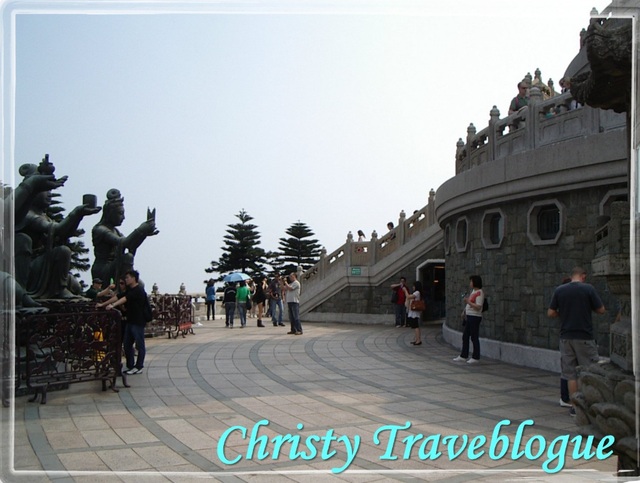
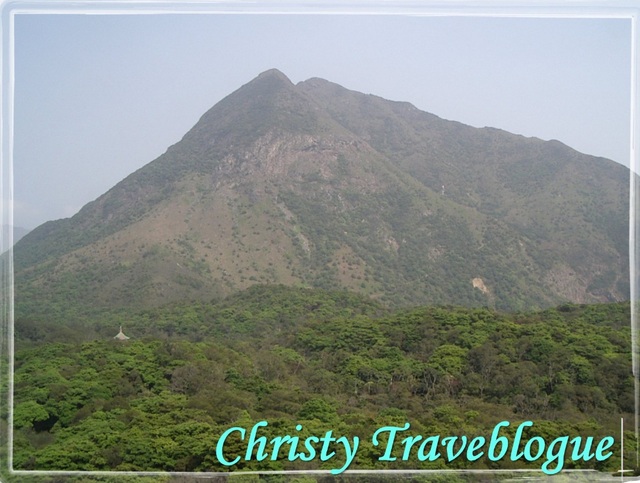
The magnificent statue is definitely one to marvel; devotee or not and should be included on every visitor's itinerary in Hong Kong.
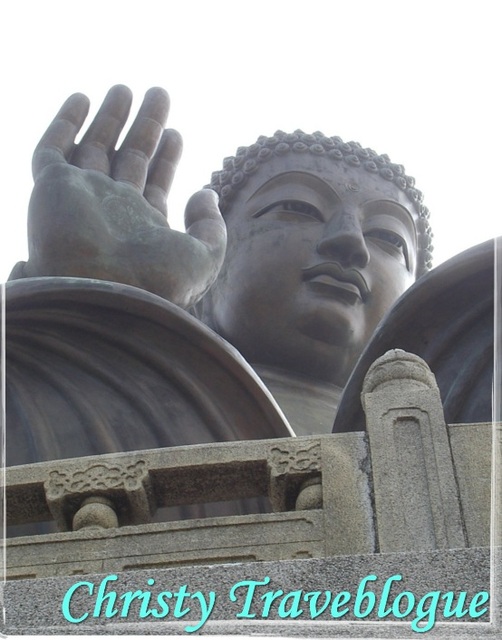
Next : Po Lin Monastery (near Tian Tan Buddha)...
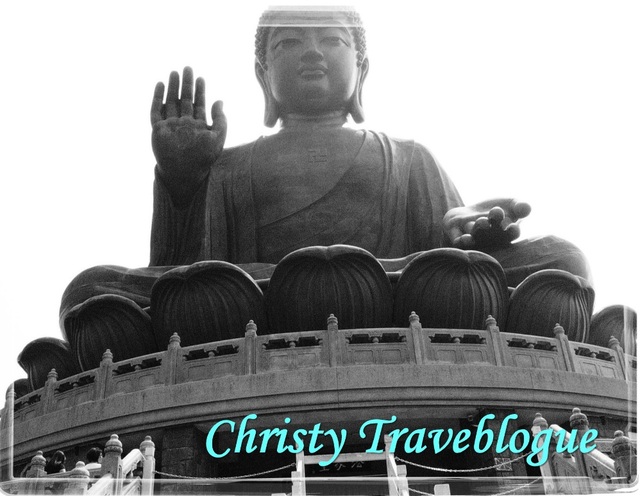
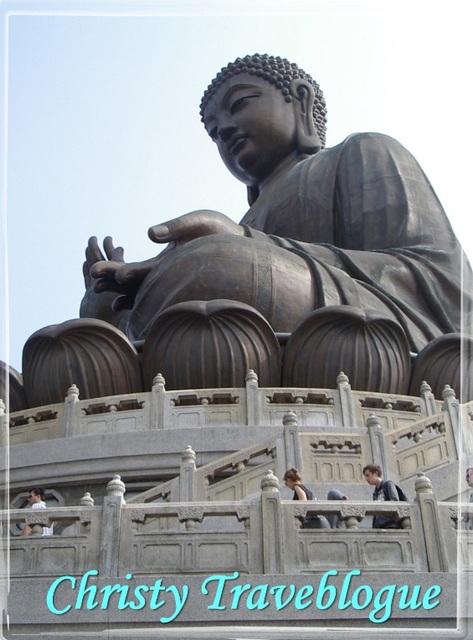
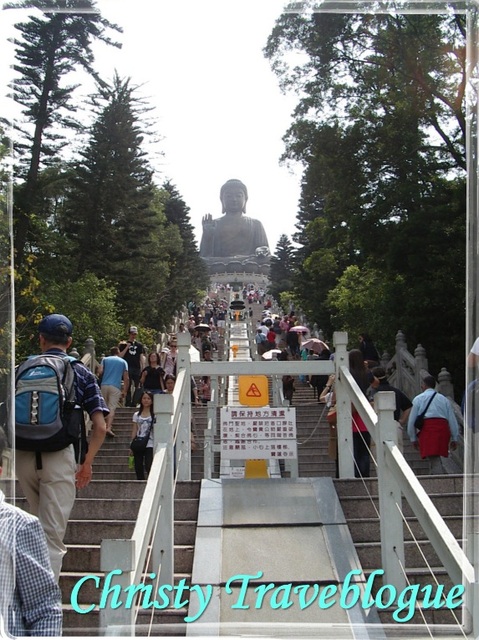
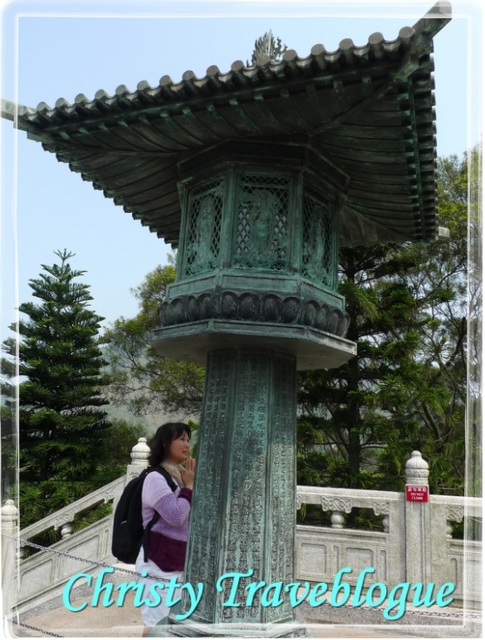
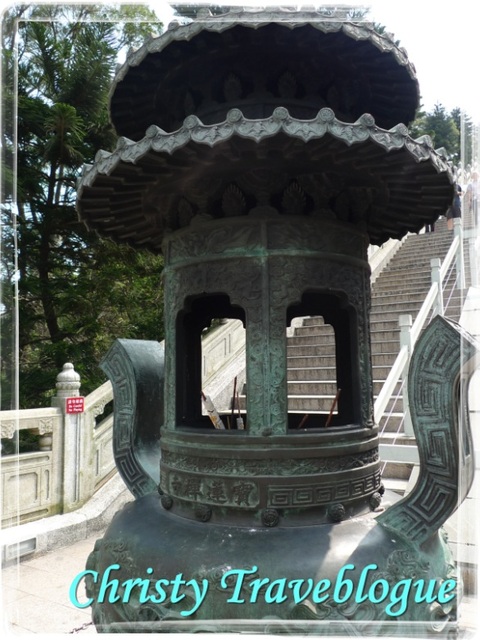
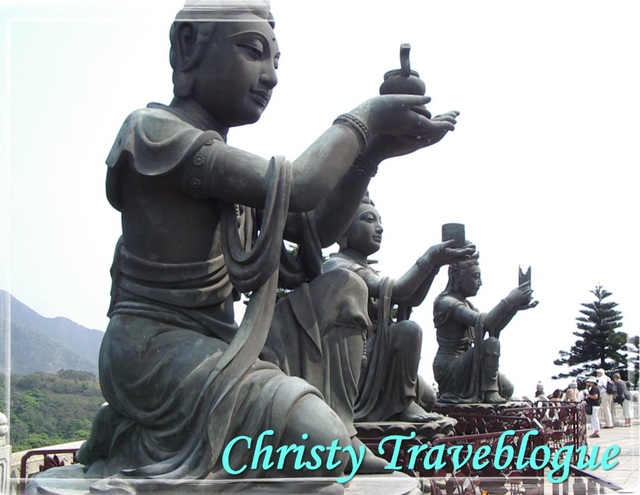
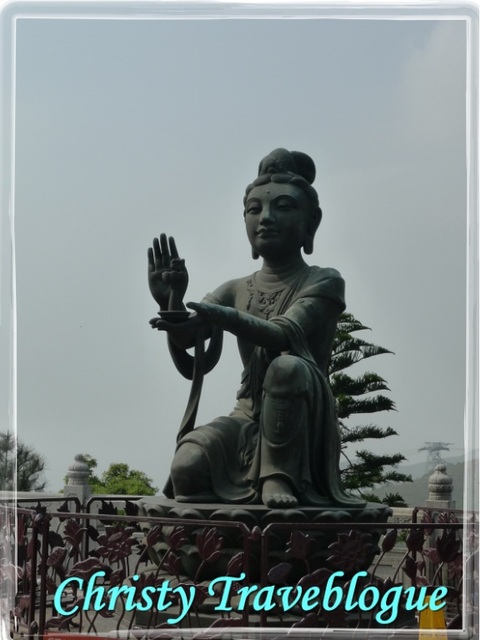
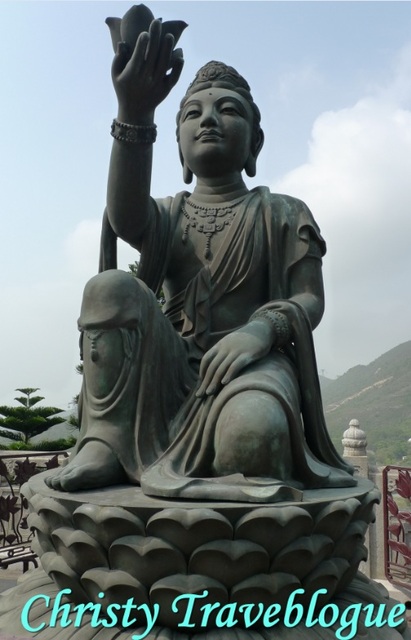
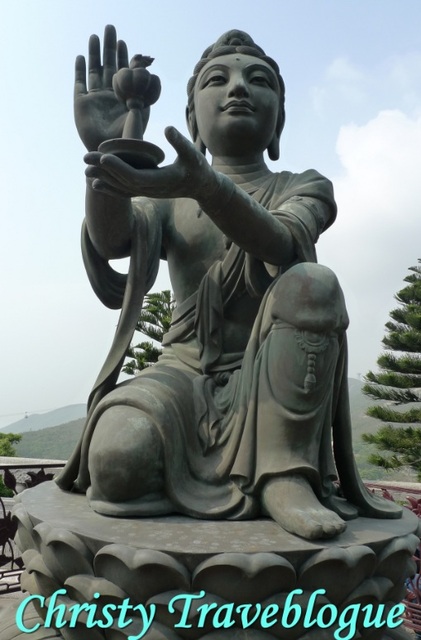
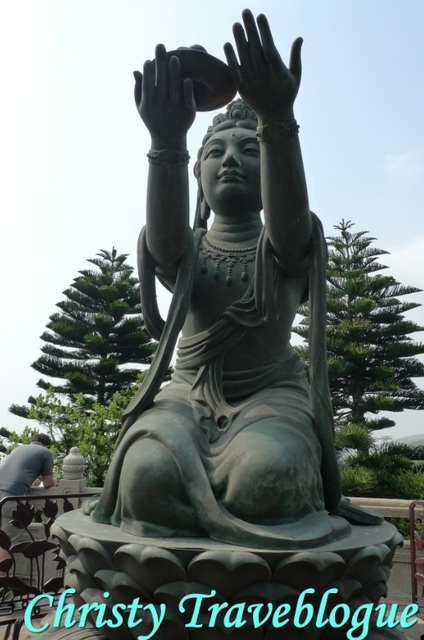
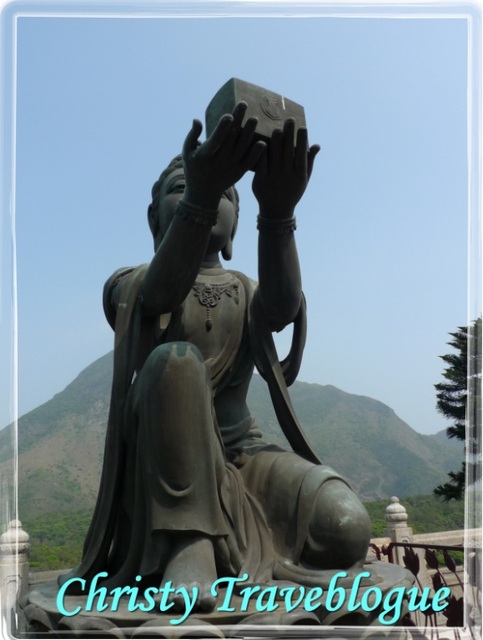
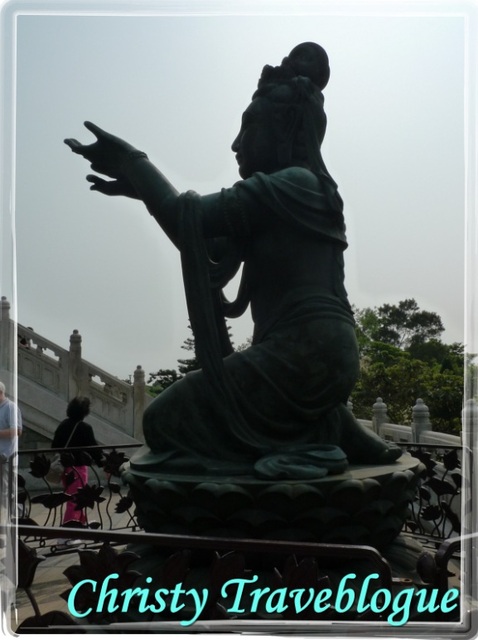
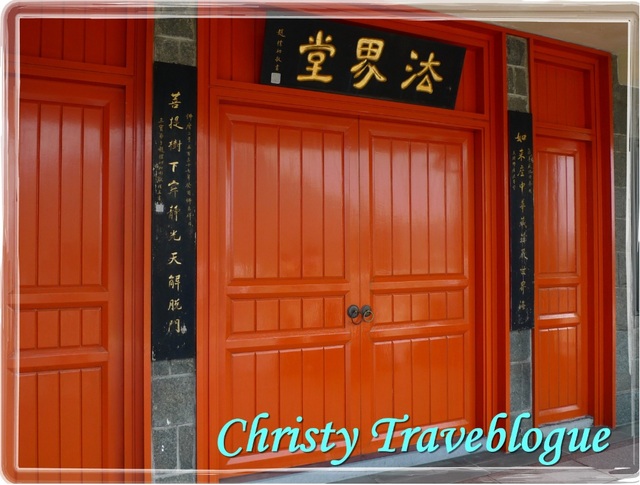

Cool photos, Christy! I was planning to see this on one of my layovers, but ended up being too tired. :)
ReplyDeleteThanks Christy!:) Awww....you MUST visit it the next time!
ReplyDeleteAgree that it's gonna be tiring, be prepared to spare at least half a day for this place;)
Amazing photos
ReplyDeleteThanks Ashley, actually I am still an amateur:p
ReplyDeleteHappy to see you here, I've bookmarked your site too, you will lots of me there;)
One of the best I have ever read on blog. Thanks for sharing the blog. I am also writing the blog on travelling and photography if you want read then please visit my blog. Mr Shamim Akhtar.
ReplyDelete